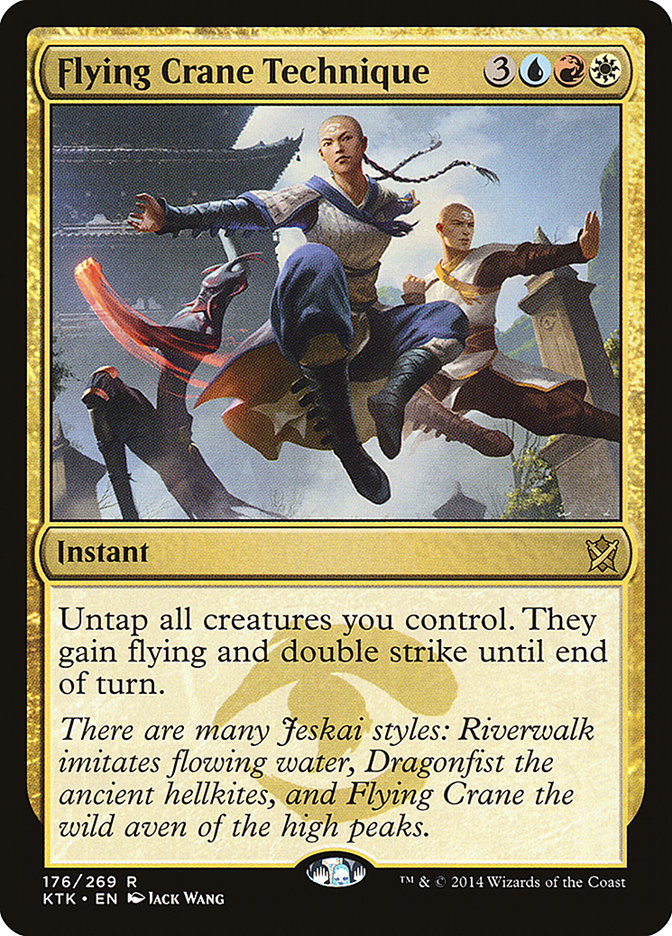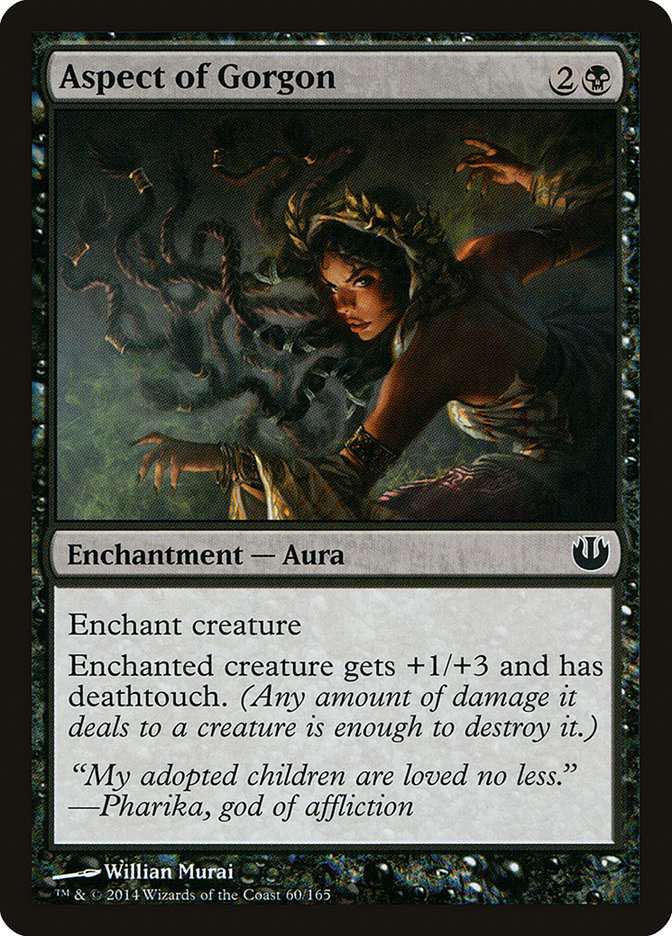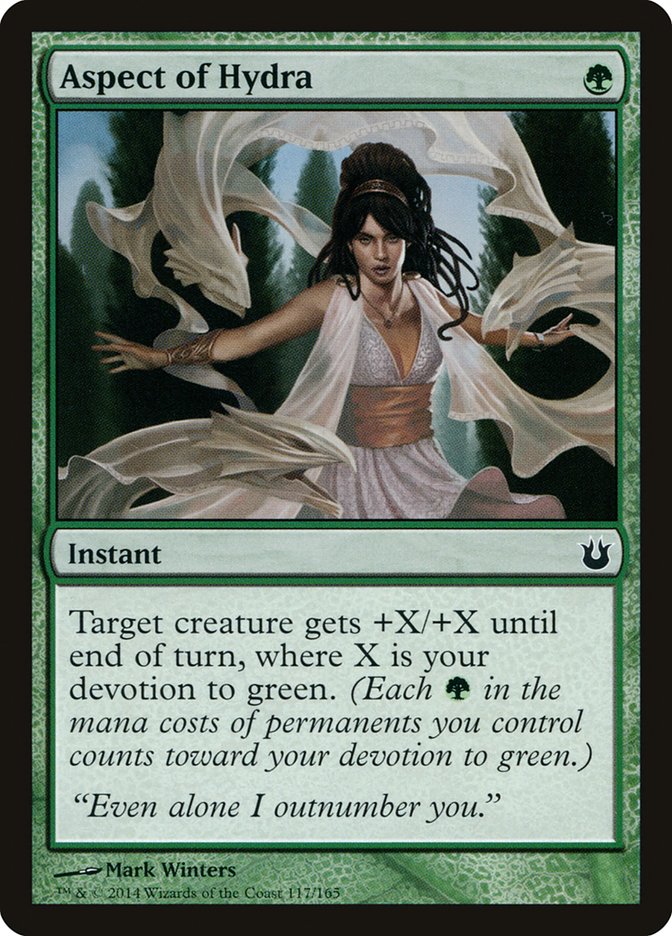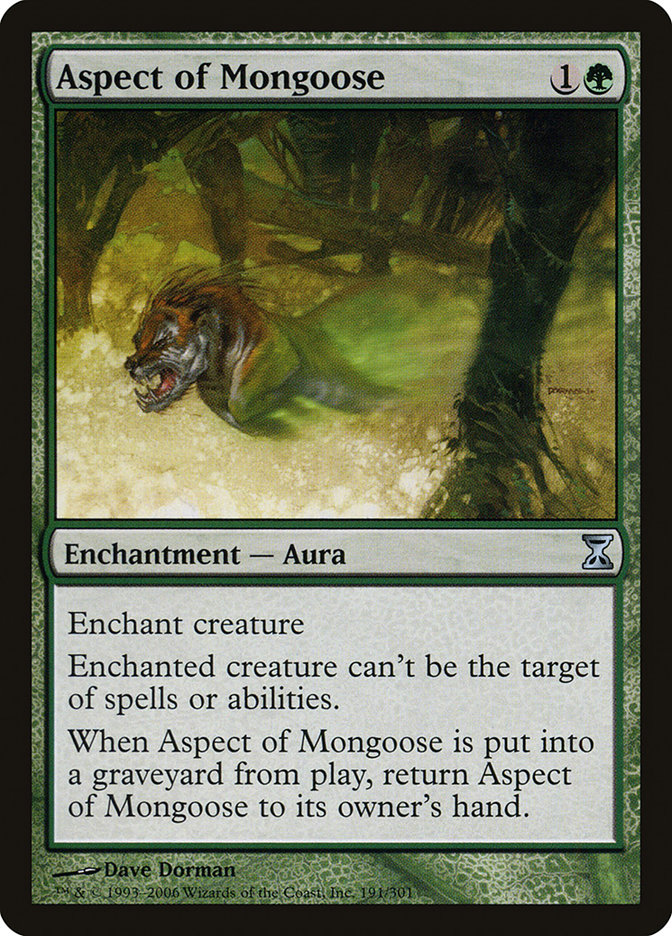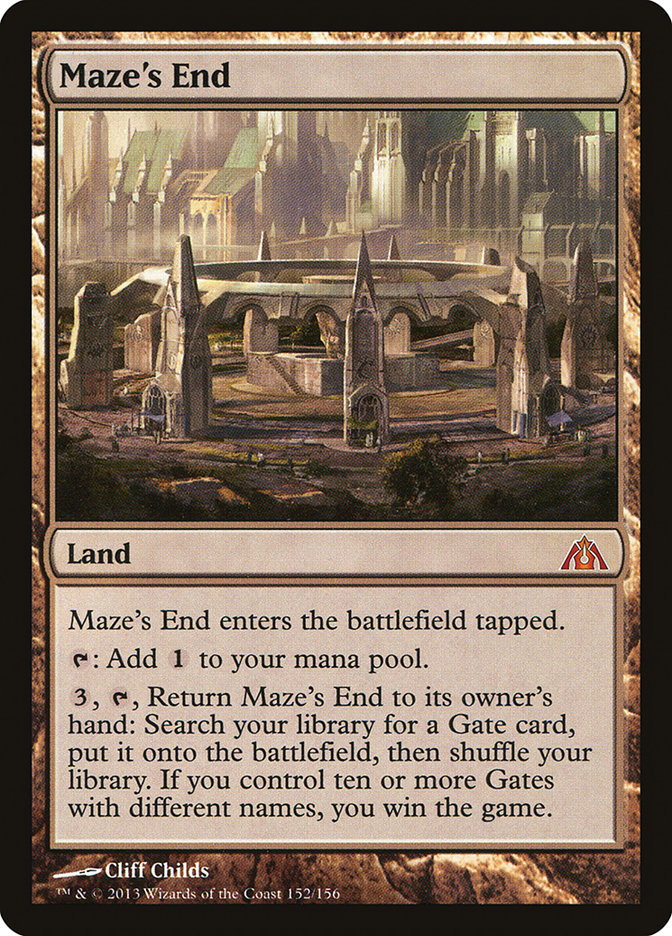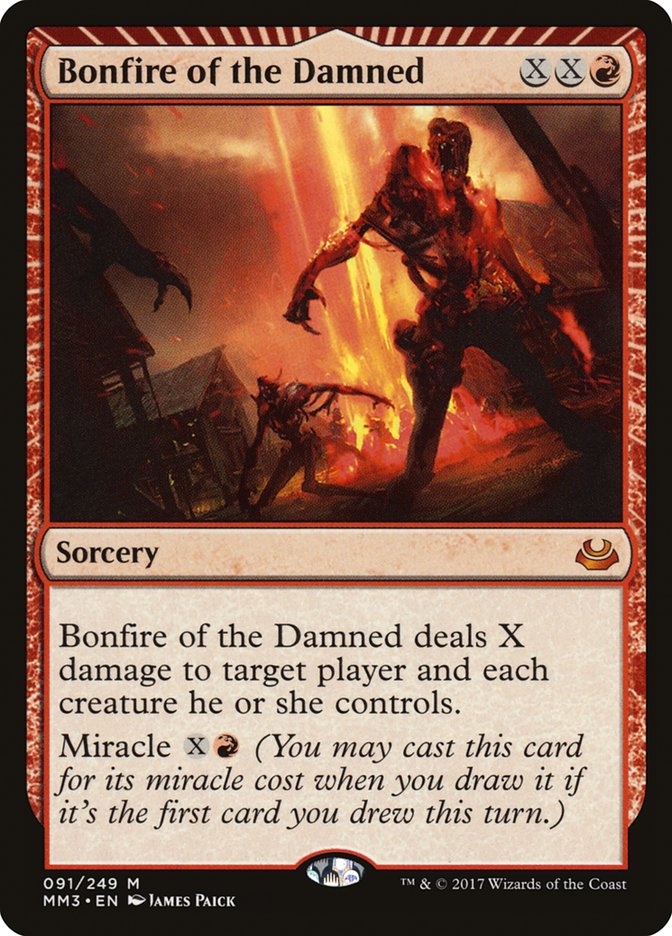If there’s been a theme to my writing these last few weeks, it’s that Magic’s a difficult game. And, to be fair, it most certainly is. But we don’t have to just sit back and appreciate how hard this game we play is. There are techniques we can employ to reduce the mental load that’s put upon us in each and every game of Magic we play.
The simple truth is that there’s too much in any game of Magic for anyone to be able to consider every aspect of the game fully and still play at anything near a reasonable pace. Good players develop shortcuts, play patterns that take away some of the mental strain and let them focus on other things. Sure, one of the marks of a great player is being able to look past the shortcuts and find the exceptions in clutch spots, but you’ll never be able to do that if you don’t develop the shortcuts in the first place.
Pick an Axis
You find yourself in a very complicated game of Magic. Par for the course, but this time it’s a matchup you’re not very familiar with and you just aren’t sure how you’re supposed to proceed. Are you supposed to get aggressive, use your removal to clear a path for your creatures, and try to get them dead? Or maybe you’re supposed to play for a longer game, make sure you get all the value you can out of each of your cards, and not worry if that means you are leaving some mana unspent each turn.
Here’s the secret: what axis you pick matters far less than picking one at all. The easiest way to lose a match of Magic is to not have a plan, and trying to tread water while you figure out what the best way to win is will cost you games. Even deciding wrongly, realizing you were wrong a few turns later, and then reversing course is often less damaging than failing to decide at all.
Magic is just easier to play once you know what axis you want to fight over. Instead of worrying equally about a dizzying number of different resources and paths to victory, we get to narrow our focus to one singular aspect of the game. Maximizing our presence in one aspect is infinitely easier than trying to stay slightly ahead in every metric.
But knowing we need to pick a battle to fight doesn’t make it any easier to make that initial decision. This is where our archetype understanding comes into play. When playing against a deck more aggressive than yours, play to maximize your life total and your mana efficiency. When you are the aggressive deck, fight a battle on the plane of life, making sure to get as much damage as possible out of each of your spells and creatures. Guidelines like these are baked into our Magic-player collective consciousness and are often useful, yet equally often flawed. If you find yourself in the unenviable position of playing a matchup for the first time in a tournament setting, by all means use them, but this should not be our goal as Magic players.
It should be no surprise that, in an article about how to best use your mental energy while in a match of Magic, I am going to point to playtesting. So many players think of playtesting the wrong way, that the point is to figure out which decks are the best. The second I start hearing win rate percentages getting thrown about, I’m out. I playtest to learn a matchup, to try out different plans and figure out what kind of games are created by various approaches. In a tournament, when I choose an axis to make the game revolve around, I’m not often choosing based on general archetype definitions or just blindly guessing. No, I’ve likely tried all the different approaches in testing and am now selecting the approach that I know will work out best given the exact composition of my hand. One way to reduce mental strain in tournaments is to put the work in and figure out how you are going to battle before even showing up.
Develop Play Patterns
Even after you know what kind of game you’re trying to play, Magic can still be too complicated to fully figure out in the heat of the moment. Picking an axis is a strategic consideration, and strategic concerns can be more or less fully answered through testing. But there’s still the wide world of tactical matters to consider, and the amount of testing it would require to fully understand the unique tactical possibilities in every individual game of a matchup is not something we can realistically hope to get in. Instead, we prepare by developing play patterns, shortcuts we can rely on in the heat of battle.
Tireless Tracker is best played on five, leaving two mana up to crack the Clue or cast a Grasp of Darkness from your hand. Develop your own threat before answering theirs in Legacy. Kill an attacking Goblin Guide after it attacks to gain the trigger equity, but beware Boros Charm giving indestructibility. Never use a removal spell in the middle of a non-lethal attack from infect; wait until the end step to avoid giving their protection extra value.
Pieces of knowledge like these provide almost immeasurable help in the middle of a match of Magic. We don’t need to reinvent the wheel every time we sit down to play a game of Magic. The trick to developing these shortcuts is, as always, playtesting. The more games you get in while testing, the more patterns you will see. When a certain use of a card always seems particularly good, it’s time to shortcut that play pattern as beneficial. “Learn by doing” might as well be my middle name, but it’s the only way I know to figure these things out.
But developing shortcuts can be dangerous too. Back in 2014, I took a serious blow from the bad side of shortcuts in a camera match late in a StarCityGames.com Invitational tournament. Back in those days, I was not very well-versed in Legacy (despite making the finals of the StarCityGames.com Legacy Open in Washington D.C. a couple of weeks before). I was playing Temur Delver in both of those tournaments, my weapon of choice throughout the early days of my Legacy career.
A few rounds before the Round 12 match in which a bad shortcut would dash my Top 8 dreams, I had the extreme displeasure of having a Blood Moon cast against me for the first time. These days, that sounds absolutely crazy to say, but back then I was almost exclusively a Standard player. Regardless, earlier in the day a Miracles opponent resolved a Blood Moon against me in a post-sideboard game. I had to read the card, and as I read it, a sinking feeling in my chest grew larger and larger. For those not in the know, Temur Delver plays no basics whatsoever. With no battlefield presence, that first Blood Moon was lights-out.
This tournament was in my Legacy infancy, so playing against new cards was a common experience. I was becoming well-versed in creating shortcuts. In that moment, I internalized the following rule: “Blood Moon ends the game. Do not let it resolve.”
Fast-forward to Round 12. Playing against Sneak and Show, I cast a Gitaxian Probe and saw a mediocre-to-bad hand that had one redeeming feature: a copy of Blood Moon. Remembering my rule that I could not win the game if Blood Moon resolved, I embarked upon a desperate line. Instead of developing two threats in my hand, Tarmogoyf and Nimble Mongoose, I left all my mana untapped and passed the turn in the hopes of bluffing countermagic. My bluff failed, my opponent cast the Blood Moon, and that game ended.
Turns out, my shortcut was exceedingly bad. Blood Moon doesn’t end the game; it just stops me from developing additional pressure. If I had cast the creatures in my hand, I very likely would have had enough power on the battlefield to end the game before my opponent’s weak hand assembled the combo. But because in my head a resolved Blood Moon won the game on the spot regardless of the battlefield state, I took a line of desperation that there was no need for. Let it be a lesson to you: be careful with your shortcuts.
Know the End-Game
Do you remember back when you were a child, struggling to complete a maze you found on a restaurant place setting or a book of puzzles? Do you remember the day you figured out you could make these mazes much easier by working from the finish line backwards to the start? Often, playing a complicated game of Magic feels like being in the middle of a maze. You can kind of remember how you got to this point, but you have no idea where you’re going, and navigating these twists and turns without even the foggiest idea of where you’re supposed to be heading seems an impossible task.
Well, the way I wrote that kind of suggests the solution: know where you’re going. Just like going backwards through a maze until you meet the line from the start in the middle, knowing what a game of Magic you win in a matchup looks like can help you navigate your way through the muddle into lines that end in your victory. For me, this end-of-game visualization is one of the main purposes of playtesting and something I highly prioritize developing.
Back in the days of Thragtusk, it was very common for games of Standard to devolve into intense battlefield stalls. When both sides are throwing Thragtusks back and forth and possibly even blinking them with Restoration Angel, it can become very hard to make any forward progress towards ending the game. There was a player in my local group back in those days who consistently chose to battle with a R/G Midrange deck featuring Huntmaster of the Fells in addition to Thragtusk to bring games to a screeching halt. Indeed, it seemed like, after every one of my rounds, I would walk by this guy and see him embroiled in yet another Thragtusk mirror, in a battlefield state that looked impossible to break through.
I bring up this player and this Standard format because this guy had a novel plan for dealing with these formidable battlefield stalls. You see, often after watching a match of his, we would go up to him and ask him questions like, “Why didn’t you attack with X for the last few turns? Every trade was profitable and might have led to you being able to end the game soon.” And every time he would tell us that he wasn’t about those minor attacks and didn’t care about such small edges; he had a different plan.
That’s right, his entire plan for these battlefield stalls was to sit back and wait to miracle a Bonfire of the Damned. To him, constantly being on the lookout for ways to chip away at the battlefield stall and establish a minor lead in the game was just not worth the mental energy. Instead, he focused on ensuring that his battlefield stayed imposing enough that, when a Bonfire did come off the top, the game would end on the spot.
I have no doubt that this unique plan of his was born early on in his days playing that deck, the first time he miracled a Bonfire to win a stalled game that he had no clue how to make progress in. Now, let me be clear: I am not recommending focusing on drawing a trump card whenever the battlefield gets a little clogged to the exclusion of all other methods of breaking through. But it’s an illustrative example of playing to your end-game, even if taken a bit too far.
These days, end-games don’t quite look the same. The end-game we are pushing for against Death’s Shadow might be a single big push for the last eight points of life or so, to avoid dying to an oversized Death’s Shadow in the midst of slowly lowering their life total to zero. One of the most important things to think about is whether the game will end with them having cards in hand or not. If the matchup typically ends with both players in topdeck mode, thinking about the end-game is less important. But if victory needs to be snuck through while they still have a lot of options, you need to have a firm grasp on how you are planning on managing that win.
Magic is a game of resources. Mana, life points, and cards are the big ones we tend to think of, but far from the only ones that matter. But in-game pieces and numbers aren’t the only resources that matter in competitive Magic. Time is a big one, as is the mental energy of the players. Magic can be a draining game, and tournaments are long days. In my youth, I refused to consider my mental energy as a valuable resource. Acknowledging that I couldn’t think through everything was admitting to weakness, something I would not do. But whether you admit it or not, your mental focus in a match of Magic is a limited resource, and it behooves you to ensure you spend it as efficiently as possible.


